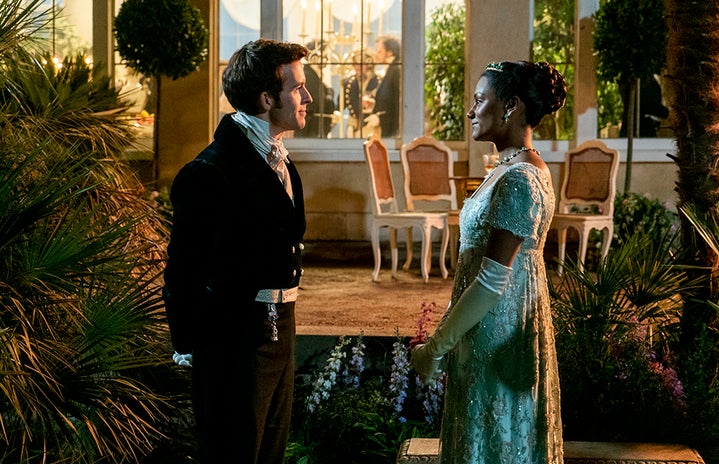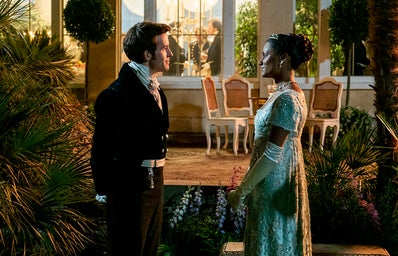The Bridgerton family returned to our screens better than ever before with their witty and relatable household dynamic with a soundtrack full of well-known renditions. The new season took a deeper look into the life of Anthony, the Viscount Bridgerton. After a very popular first season about Daphne and Simon, this one focused on Anthony searching for his viscountess, while also butting heads with a roadblock, Kate Sharma.
This season can be compared to Shakespeare’s Taming of the Shrew and the modern classic 10 Things I Hate About You. The story follows the life of Edwina Sharma (Charithra Chandran) and her older sister Kate Sharma (Simone Ashley). Kate, being an overprotective sister, only wants the best for Edwina, but her overprotectiveness leads to more harm than good.
The TV series is inspired by the books, created by Julia Quinn. In the books, sisters Kate and Edwina aren’t brown, they’re white, but the show is known for its dedication to diversity and has the Sharma sisters come from India. This is a pivotal plot point in the series because many parallels are made to Indian culture:
Skin colour
Right off the bat, Kate and Edwina are dark-skinned Indians. It may not seem like a big deal, but colourism is a huge problem in South Asia. For someone who has been constantly told they are too dark, seeing other dark-skinned women on screen gives a sense of belonging and relatability. It’s important to have dark-skinned South Asians represented and not only the light skins.
Language
Another way South Asians are accurately represented in the series is the use of language. The first time we meet Kate, she says “baap rey,” a Hindi phrase commonly used to express annoyance towards an object or person.
The Sharma’s father is referred to as “appa” and Kate’s mother as “amma.” These names translate to Father and Mother respectively, and it’s origin heads from the southern part of India. Edwina calls Kate “didi,” which in Hindi, means older sister. If you noticed, in the last episode, Anthony uses Kate’s full name; Kathani Sharma. She goes by “Kate” for short, which is something many other Brown people could relate to, but I was wondering why they picked such a white name for this character. I couldn’t find the real meaning of Kathani, but it’s nice to know that her name wasn’t just Kate.
These small phrases and words make a big impact on people watching the show, while also making the acting feel much more realistic.
Edwina and Kate also have a slight Indian accent. India used to be under British rule from 1858-1947, and to this day, the English that is taught in those countries is British English. For years, Brown people have been made fun of for their accents, but Bridgerton shows that it’s not anything unordinary.
Cultural practices
During Edwina’s pre-wedding ceremony in episode six, the crew plays a rendition of a popular Hindi song “Kabhie Khushi Kabhie Gham”. During that scene, Mary and Kate are seen applying a mixture of turmeric/haldi, chickpea flour, and water to Edwina. This pre-wedding ritual is known as the haldi ceremony. The point of applying this mixture to the soon-to-be bride is to give her glowing skin for the wedding.
Another very common practice in South Asian culture is the practice of oiling hair. This scene was for all the South Asians who got made fun of for oiling their hair when they were younger; look at us now.
Costume
Edwina is sitting by the window, and when I paid closer attention, I saw something familiar. Edwina is wearing “khussas,” a traditional South-Asian shoe similar to flats.
At Anthony and Edwina’s (almost) wedding, Kate shows Edwina her mother’s gold and emerald bangles. Another big part of South Asian culture is jewelry, particularly gold. Jewelry signifies maturity, and many mothers will pass down gold jewelry to their daughters, kind of like a family heirloom. South Asians are big on family, and the passing of the bangles portrayed that sentiment.
I really appreciated that the producers paid attention to the smallest of details to make the sisters embrace their Indian heritage, and as a viewer, it was nice seeing my culture celebrated on TV. I can’t wait for season three and to watch Benedict and Eloises’ stories unfold.


